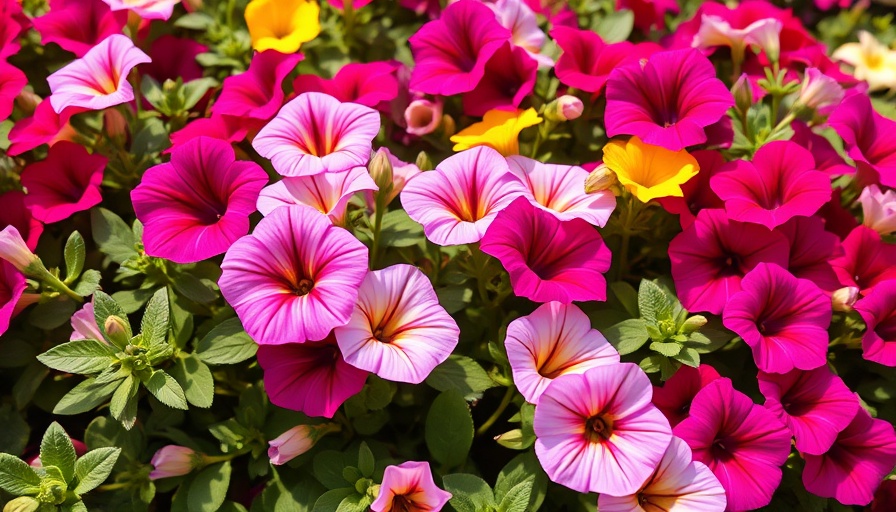
Exploring the Vibrant World of Petunia Plants
For garden enthusiasts and hobbyists alike, petunias stand out as an essential element in creating eye-catching floral displays. Known for their trumpet-shaped blooms available in a rainbow of colors— from the deepest purples to vivid reds and blues—petunias add a delightful touch to any garden. With over 35 species and an ever-evolving array of hybrids, choosing the right variety can feel overwhelming. In this guide, we’ll explore the fascinating types of petunias and how each can enhance your garden design.
Understanding the Five Types of Petunia Plants
Each category of petunia adds unique characteristics to your overall garden design. Here’s a closer look at five distinct types:
1. Grandiflora
Grandiflora petunias are known for their large, striking flowers that can be used to create dramatic floral arrangements. These blooms are particularly vibrant and best suited for visitors' first impressions.
2. Multiflora
If you’re seeking a colorful and dependable option, multiflora petunias are ideal. They feature smaller blooms but are much more prolific, ensuring a long-lasting display of color in your garden.
3. Floribunda
Floribunda petunias are the perfect middle ground. With larger blooms than multiflora but more abundant than grandiflora, they offer a balance between size and quantity, making them a versatile choice.
4. Milliflora
For those who appreciate compact yet colorful options, milliflora varieties deliver smaller flowers that are perfect for container gardening or small space designs. These can easily be displayed in hanging baskets, terrariums, or window boxes.
5. Trailing or Ground Cover
Trailing petunias are fantastic for cascading over the edges of pots or hanging baskets, providing a lush, flowing look. As they spread, they cover bald patches in landscapes and create stunning ground covers.
Why Understanding Petunias Matters to Gardeners
By understanding the different types of petunias, gardeners can make better choices tailored to their specific needs. Each variety brings unique growth habits, allowing for personalized landscape designs that reflect individual preferences.
Integrating Petunias into Your Garden Design
Petunias are incredibly adaptable. They thrive in beds, borders, planters, and even among vegetable gardens as companion flowers. Their enduring blooms make them an excellent choice for adding color during the growing season.
Tips for Choosing and Caring for Petunias
When adding petunias to your space, consider factors such as soil quality, sunlight, and watering practices. Petunias prefer well-draining soil and at least six hours of sunlight daily. Regular deadheading will also encourage longer blooms and enhance their beauty.
Getting Inspired: Integrating Petunias into Existing Gardening Projects
Imagine colorful petunia blooms filling gaps in your existing flower beds or spilling over the edges of raised garden beds. Their versatility allows for creative gardening projects that are both functional and aesthetically pleasing, making them popular additions to urban gardening scenes and backyard landscapes alike.
Conclusion: Plant Petunias for Vibrancy and Versatility
Petunias not only offer eye-catching beauty but are also relatively easy to grow and care for. Their long blooming period makes them a fantastic choice for any gardener keen on vibrant displays throughout the growing season. Regardless of whether you're planting them in a decorative pot or across a sprawling landscape, petunias add magic to any space.
Now that you’re equipped with insights about petunia varieties, consider adding them to your garden design. Not only will they enhance your spaces, but they’ll also attract pollinators, enriching your garden’s ecosystem.
 Add Row
Add Row  Add
Add 




Write A Comment